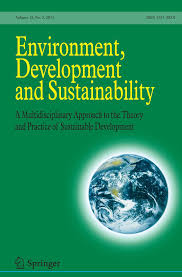Ver ítem
- xmlui.general.dspace_homeCentros Regionales y EEAsCentro Regional Mendoza - San JuanEEA La ConsultaArtículos científicosxmlui.ArtifactBrowser.ItemViewer.trail
- Inicio
- Centros Regionales y EEAs
- Centro Regional Mendoza - San Juan
- EEA La Consulta
- Artículos científicos
- Ver ítem
Biodiversity and phenology of native dicotyledonous species in a newly established vineyard in Mendoza, Argentina
Resumen
Biodiversity plays a crucial role in supporting ecosystem functions and enhancing agroecosystem resilience to anthropogenic disturbances. The establishment of vineyards in natural areas with native vegetation is recognized as a significant driver of landscape fragmentation and biodiversity loss. This study was conducted in a vineyard surrounded by natural vegetation, including two riparian corridors serving as biological corridors, to assess the impact of
[ver mas...]
Biodiversity plays a crucial role in supporting ecosystem functions and enhancing agroecosystem resilience to anthropogenic disturbances. The establishment of vineyards in natural areas with native vegetation is recognized as a significant driver of landscape fragmentation and biodiversity loss. This study was conducted in a vineyard surrounded by natural vegetation, including two riparian corridors serving as biological corridors, to assess the impact of vineyard management practices on biodiversity. Taxonomic and functional richness of dicotyledonous vegetation were evaluated across different zones: vineyard center, border, biological corridors, and surrounding natural areas. Vegetation surveys were conducted using fixed transects, and citizen science data were integrated to complement surveys and enhance species detection. The response of dicotyledonous species persisting within the vineyard to mowing practices was examined through phenology-related variables, focusing on six species from Asteraceae, Fabaceae, and Malvaceae families under mowed and non-mowed treatments. Results showed a significant decrease in taxonomic and functional richness toward the vineyard interior. Riparian corridors were identified as key contributors to species richness, positively influencing adjacent crop edges. Floral abundance and days in flower were notably reduced in mowed sectors, particularly affecting Malvaceae species. However, resilience to mowing was observed in species such as Thelesperma megapotamicum (Asteraceae) and Adesmia grandiflora (Fabaceae), indicating their potential for use as native cover crops. These findings highlight the necessity of maintaining or restoring areas with shrub and tree elements to enhance vertical heterogeneity and provide resources for biodiversity. Integrating these conservation measures with vineyard management can contribute to sustainable and ecologically responsible grape cultivation.
[Cerrar]

Autor
Fuente
Environment, Development and Sustainability : 1-24. (Published: 23 December 2024)
Fecha
2024-12
Editorial
Springer
ISSN
1573-2975
Documentos Relacionados
Formato
pdf
Tipo de documento
artículo
Proyectos
(ver más)
INTA/MZASJ-1251205/AR./Atención a las problemáticas de los nuevos modelos productivos del Valle de Uco.
INTA/2019-PE-E1-I020-001, Desarrollo de criterios para diseño, monitoreo y evaluación de estrategias de intensificación sostenible de agroecosistemas, basadas en múltiples servicios ecosistémicos
Palabras Claves
Derechos de acceso
Restringido
 Excepto donde se diga explicitamente, este item se publica bajo la siguiente descripción: Creative Commons Attribution-NonCommercial-ShareAlike 2.5 Unported (CC BY-NC-SA 2.5)
Excepto donde se diga explicitamente, este item se publica bajo la siguiente descripción: Creative Commons Attribution-NonCommercial-ShareAlike 2.5 Unported (CC BY-NC-SA 2.5)


